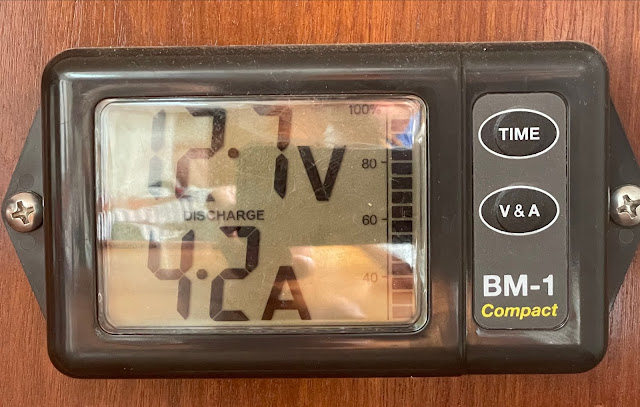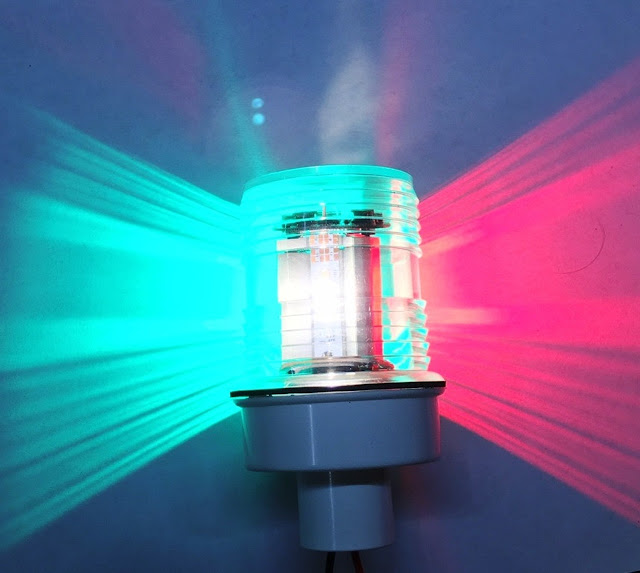Refrigeration, part 2
Six years on, and after a bunch of people asked, I figured that it was time to do part #2 of the refrigeration story. A long time coming, but at least I have a very good feel on what’s what!
If you missed the first post, you can find it HERE.
Overall, the Isotherm system gets full marks from us and the crew. It works very well, uses little power, and has been 100% reliable. But let's look at the details. Obviously the big deal is always going to be POWER.
The unit draws about 4 amps when running, and runs at about a 25% duty cycle in our climate. Doing the very convenient math, that equates to a reasonable 24Ah/day consumption. Looking at it another way, it means it draws about 1/4 of the capacity of a 100Ah lead acid battery in a 24 hour day, and in 2 days will draw it down to the recommended maximum drain of 50%. It's actually a bit more than I first posted, measuring now with more accurate gear. Here our NASA Marine BM-1 Compact battery monitor is tracking the draw (plus .2 amp house draw):
But even with a Group 27 110Ah house battery, you still have to be careful. We have a dedicated starter battery, but the biggest worry is draining the house battery well below 50% capacity and damaging it.
To combat the problem, we installed a Low Voltage Disconnect (LVD) device between the battery and the unit. The purpose of an LVD is to cut power to an attached load when the incoming voltage drops below a pre-set level. This helps save the battery from being drained by the load. The model that we got allows you to set the disconnect and reconnect voltages. I set our disconnect at 12.1, which is 50% capacity of a lead/acid battery. Conveniently, the unit we selected also has a ON/OFF manual override, as well as the default AUTO position. That allows us to turn it off and on manually if needed. This is important to us, as we wired the unit directly to the battery instead of going through the panel. That wire has a fuse within inches of the battery, so the whole wire is protected. Going to the panel made no sense to us, as it doubled the wire run, and would take up a panel switch that we almost would NEVER turn off.
If tripped off due to low voltage, it turns back on at 12.8V which will happen when the battery is charged. Again if needed or desired, you can override the LVD function by switching the unit to ON.
While it would have been easier to mount the LVD near the compressor, mounting it in the galley near the fridge controls allows for us to monitor the fridge state via the LED light, and also manually turn the fridge off without having to pull a fuse.
Also shown is the thermometer, displaying both icebox (40.5F/4.5C) and ambient (79.2F/26C) temps. A nice setup!






Comments
Post a Comment